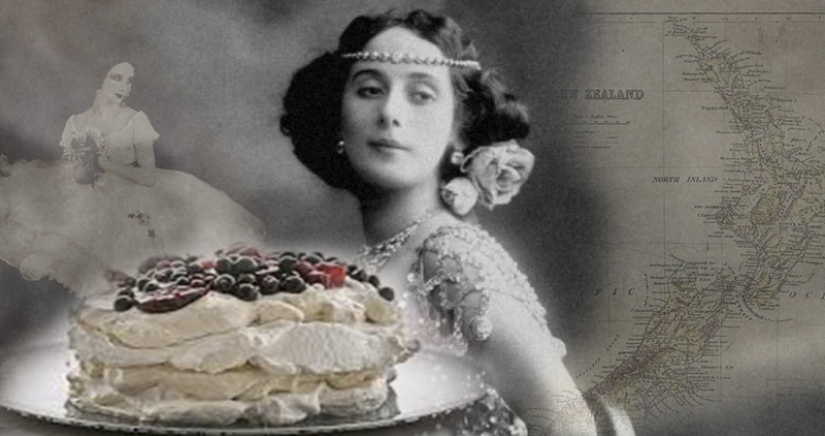How did the Pavlova cake appear and how is it connected with the great Russian ballerina
Categories: Food and Drinks | History
By Pictolic https://pictolic.com/article/how-did-the-pavlova-cake-appear-and-how-is-it-connected-with-the-great-russian-ballerina.htmlPavlova cake can be bought today in many confectionery stores. But few people know the history of this popular dessert. It was invented more than 100 years ago and the name was given to him by a famous Russian ballerina. How did it happen that the dancer gave her name to a completely non-aesthetic confectionery dish?

Ballerina Anna Pavlova, who is now considered the greatest Russian dancer, was once called Pavlova the second. When Anna studied at the Imperial Theater School, her namesake Varvara Pavlova performed on stage. Varvara, although she started her career much earlier, could not reach the heights in the dance art. But the choreographers noticed Pavlova the second and after school they were assigned to the Mariinsky Theater troupe.

Ballerina Anna Pavlova managed to build a great career and became a legend of Russian ballet. Already in 1902, Anna danced all the leading roles in popular productions. In 1907, Anna presented the Swan dance, which became famous all over the world. He provided the ballerina with worldwide popularity and glorified Russian ballet in Europe and the USA.
After The Swan, Pavlova became the star of Sergei Diaghilev's debut Russian Season in France. Full house in Paris opened her way to the scenes of the USA and Great Britain. Thanks to her grace and lightness, the dancer has become a legend of the world ballet. Fans claimed that during the dance she did not touch the stage with her feet.

The first dessert named after a Russian ballerina appeared in New York in 1911. It was a fruit ice with berries, which was created by confectioners who were impressed by the ballet steps of a Russian dancer. The delicacy quickly became popular not only in the USA, but also The Old World. It was served even in Australia and New Zealand.

Strange as it may seem, but it is the confectioners of New Zealand who are sure that they managed to glorify Pavlova in the original dessert. Legend has it that the chef of a hotel in Wellington, the capital of the island state, for the first time prepared an airy dessert similar to a tutu of a Russian ballerina.
Neighboring Australians also claim to be the author of a unique dessert. There, too, one of the chefs of the elite hotel dedicated his fruit meringue to a Russian ballerina who came on tour. Although there is a version that initially the dessert had nothing to do with the Russian woman. Just one of the guests, having tasted it, exclaimed: "He is as gentle as Pavlova!". The stress on the last syllable is still relevant!
The authors of the unique dessert can be found anywhere in the world. But scientists decided to find the origins of this dish. In 2015, a study was published that destroyed the "ballet" version. It turns out that the famous delicacy appeared in Europe at the turn of the 17th-18th century. But this does not prevent Australians and New Zealanders from considering the Anna Pavlova cake as a traditional Christmas dish.

It is worth noting that in countries located nearby, cake recipes differ significantly. In Australia, they like crispy meringue, and in New Zealand prefers the top of air cream with kiwi slices. In general, a whole cult of Pavlova desserts has emerged in the Southern Hemisphere. Experts have counted more than 300 different recipes for cakes, pastries and meringues named after the Russian prima.
Recent articles

Leonardo da Vinci was accused of being fond of orgies. William the Conqueror, despite all his successes, was called a "Bastard" ...

Modesty? Decency? A sense of tact? No, you haven't heard! Just look at what the people from the selection below are doing! No ...

American documentary photographer Bruce Davidson came to the UK in 1960 for a couple of months on the assignment of Queen magazine. ...